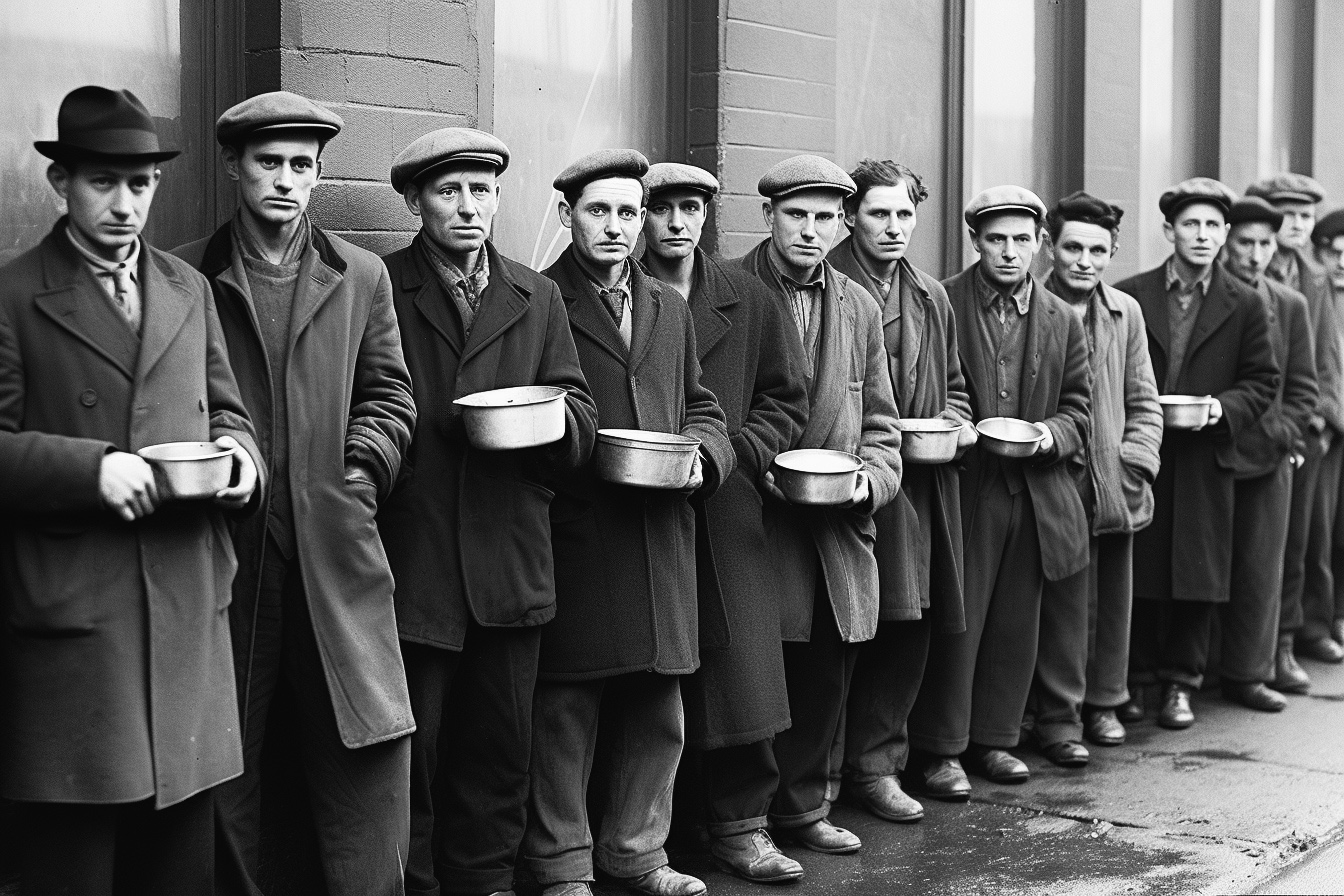This post will take you on a journey to explore the thrifty habits developed during the Great Depression, a period of significant economic hardship that left an indelible imprint on the generations that lived through it. The practices adopted during these challenging times still offer valuable lessons today, particularly for those seeking to lead a more frugal and sustainable lifestyle.
Understanding the Economic Hardships of the Great Depression
The Great Depression, occurring in the 1930s, was the most severe economic downturn in the history of the industrialized world. Unemployment soared, banks collapsed, and countless families fell into poverty. This crisis forced many people to develop innovative ways to survive, forging habits centered around frugality and resourcefulness.
Frugality as a Necessity: The Great Depression Mindset
During the Great Depression, frugality wasn’t merely a choice but a necessity. Every penny mattered. Each item, whether a piece of clothing or a food scrap, had potential value. Waste became a luxury few could afford, and conservation became the rule, not the exception.
Stretching the Dollar: Bartering and Trading in the Great Depression
Without sufficient money to purchase goods and services, many people resorted to bartering and trading. Individuals exchanged homemade goods, fresh produce, or labor for needed items. This trade practice stretched scarce resources and fostered a sense of community and mutual aid.
Creative Meal Preparation: Waste Not, Want Not
Food scarcity led to innovative, creative meal preparation. Families learned to stretch food supplies, often transforming leftovers and scraps into delicious, filling meals. The motto became ‘waste not, want not,’ ensuring that nothing edible ended up in the trash.
Repurposing Household Items for Extended Use
Household items, clothing, and tools were used until they wore out, then creatively repurposed for other uses. For instance, feed sacks became dresses, and old tires transformed into sandals. Nothing was discarded hastily; every object held the potential for a second life.
Preserving and Canning Food for Long-Term Storage
Food preservation became crucial for survival. People canned fresh produce from their gardens to last through the winter months. Pickling, drying, and salting were standard methods used to extend the shelf life of foods, ensuring supplies during periods of scarcity.
Making Clothes Last: Sewing and Mending Habits
The notion of ‘disposable’ clothing was alien during the Great Depression. Clothes were mended, altered, and handed down through generations. Basic sewing skills were essential, with patches and stitches telling tales of the garments’ long, valuable lives.
Growing Your Food: The Victory Garden Initiative
Many families cultivated Victory Gardens, growing their fruits, vegetables, and herbs. These gardens were not just a source of food but also a symbol of resilience and self-reliance during challenging times.
Utilizing Public Services and Community Resources
Libraries, public parks, and community events played an essential role in the lives of families during the Great Depression. These resources provided free access to books, recreation, education, and entertainment, mitigating some of the hardships of the time.
Making Your Own Cleaning and Personal Care Products
Store-bought soaps and cleaners were often replaced with homemade alternatives. Common ingredients like vinegar, baking soda, and lemon were used in countless cleaning recipes. People also made their personal care products, from toothpaste to shampoo.
Embracing Minimalism: Learning to Live with Less
Living with less became the norm. Excess was pruned and clutter removed, paving the way for a minimalist lifestyle focused on necessities. This way of living conserved resources and simplified life, a practice still valued today.
DIY Repair: Fixing Instead of Replacing
During the Great Depression, it was fixed—not replaced if something broke. Basic carpentry, plumbing, and mechanics skills were priceless, ensuring the longevity of household items and reducing reliance on new, expensive replacements.
Reducing Energy Consumption: Lessons from the Great Depression
Resources like electricity and gas were used sparingly. Lights were turned off when unused, rooms were heated by shared family warmth, and food was cooked in bulk to conserve fuel. These habits led to a significant reduction in energy consumption, a lesson we can still apply today.
Building a Frugal Mindset: The Importance of Saving
Despite the hardship, families strived to save whatever they could. This practice enforced a disciplined and frugal mindset, emphasizing the importance of preparing for future uncertainties—a value that remains crucial in today’s economic climate.
Self-Sufficiency: Learning Basic Survival Skills
The Great Depression era saw a rise in self-sufficiency, with people learning basic survival skills such as foraging, fishing, and hunting. Knowledge of local flora and fauna could mean the difference between a meal on the table or going hungry.
Keeping Chickens and Livestock for Food and Barter
Raising chickens and other small livestock provided food and potential trade items. Chickens, in particular, were valuable for their eggs—a consistent source of protein.
Making Homemade Bread and Other Staples
Bread, a staple food item, was often made at home. Not only did homemade bread save money, it also filled homes with an enticing aroma—a small comfort during hard times.
Thrifty Entertainment: Making Your Own Fun
Entertainment didn’t need to be expensive. Families found joy in simple pleasures like board games, storytelling, playing music, and nature walks. These activities not only amuse but also foster a sense of togetherness.
Frugal Living Today: Applying Depression-Era Habits to Modern Life
Many habits from the Great Depression era have contemporary relevance. These practices offer a path towards a more sustainable, mindful lifestyle in our age of consumerism and waste. From growing our food to mending our clothes, we can learn much from our ancestors’ resilience and resourcefulness.
Conclusion
The frugal living habits of the Great Depression era offer timeless wisdom. They teach us the value of resources, the power of community, and the virtue of resilience. As we move forward, we carry these lessons, embracing the enduring legacy of Depression-era frugality.
